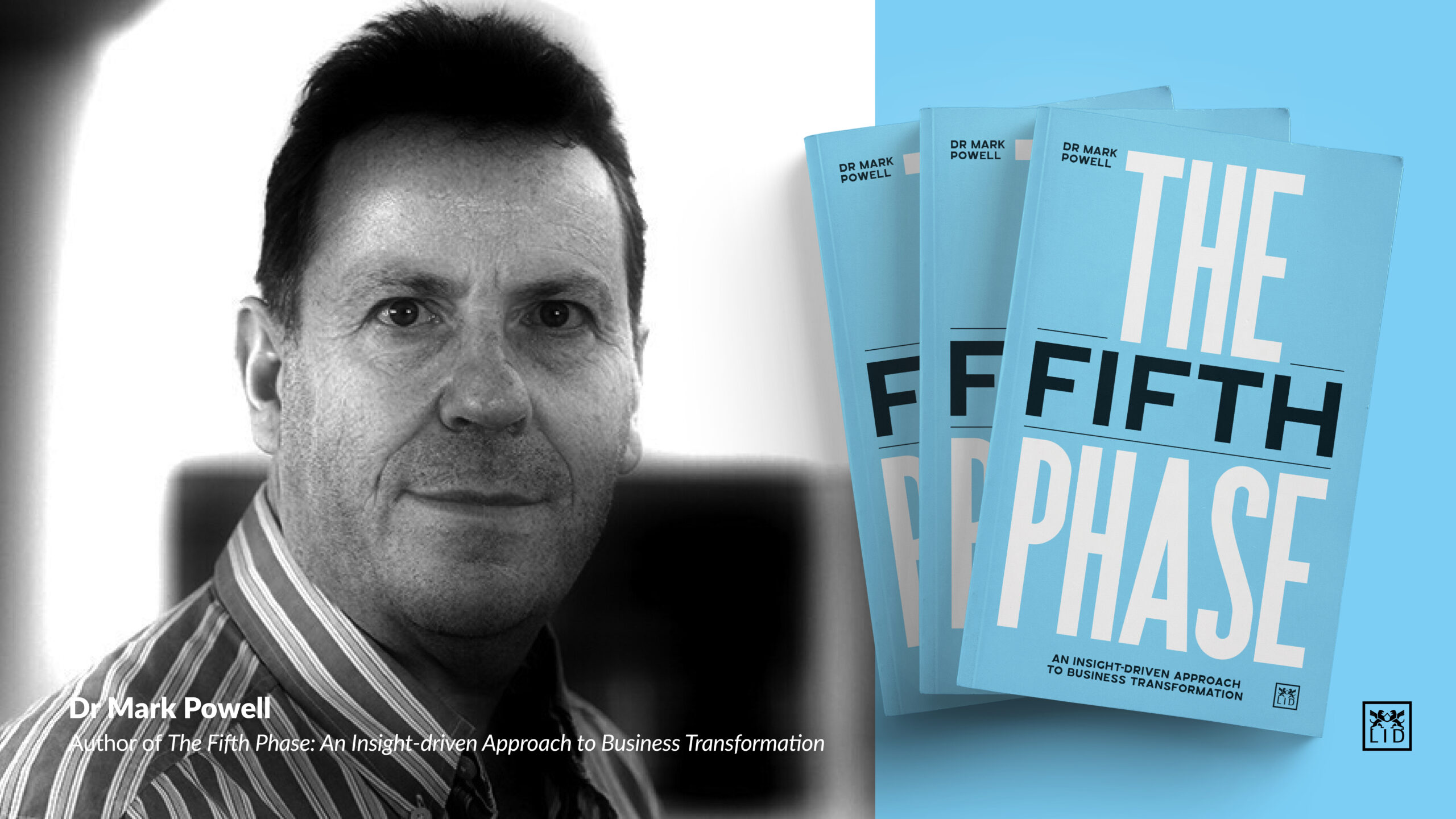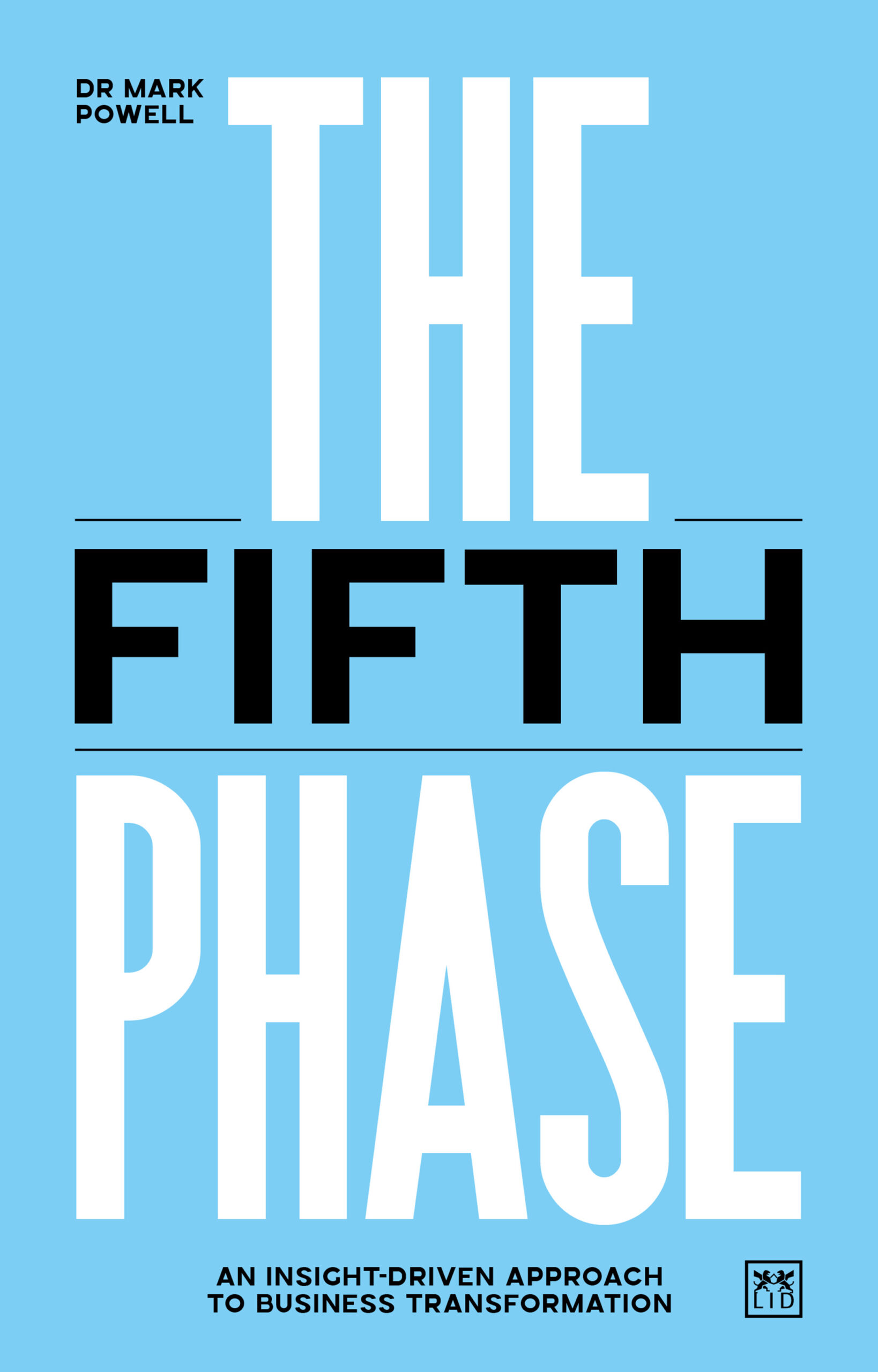|
Beware the AI Luddites
Beware the AI Luddites

By Guest Contributor Dr Mark Powell
AI is coming to take our jobs… or is it? Author of The Fifth Phase, Dr Mark Powell, shares why he believes AI can be extremely helpful for businesses.
At the AI Safety Summit 2023 at Bletchley Park, Buckinghamshire, the codebreaking centre where Alan Turing and others worked to decode encrypted messages sent by the German military during the Second World War, Tesla founder and X (Twitter) destroyer Elon Musk declared that AI was “the most disruptive force in human history” (which might be true) and then surprisingly predicted that “there will come a point where no job is needed. You can have a job if you wanted to have a job for personal satisfaction. But the AI will do everything.”
I doubt that. So does the World Economic Forum, which predicted in The Future of Jobs Report 2020 that “we estimate that by 2025, 85 million jobs may be displaced by a shift in the division of labour between humans and machines, while 97 million new roles may emerge that are more adapted to the new division of labour between humans, machines and algorithms.”
Musk’s comments seem to reflect the kind of thinking that assumes that AI will ‘take over’ from humanity, either benignly, at our direction, or with its own malign intent, meaning the end of humanity. Whoops!
I think we are getting carried away. AI is a tool that can perform astonishing tasks when directed by humans. It can also direct itself to a degree and could feasibly ‘run away’ on an AI-driven dead end or even on some catastrophic path – a concern that the AI Safety Summit addressed, with UK Prime Minister Rishi Sunak, the summit chair, declaring: “I believe the achievements of this summit will tip the balance in favour of humanity, because they show we have both the political will and the capability to control this technology and secure its benefits for the long-term.”
Sunak’s phrase about “tipping the balance” in favour of humanity was only so reassuring and reflects people’s continued unease with the new technology. But the ongoing, slightly hysterical concerns about the safety of AI and its capacity to destroy jobs, (and possibly humanity as a whole) feel very familiar.
“We’re all doomed”
In 19th century Britain, weavers destroyed innovative automated machinery that they rightly believed would threaten their jobs. They became known as ‘Luddites’, after their mythical leader, Ned Ludd. Thousands of handloom weavers did lose their jobs after the introduction of the automated loom, but powered, automated production machinery went on to fuel the First and Second Industrial Revolutions, creating millions of new jobs, generating unprecedented growth in the wealth of nations and lifting people out of poverty.
A little later, Victorian Britons became anxious about the effects of travelling on the new, unthinkably fast steam trains. There were concerns about ‘railway madness’, brought on by the erratic movement and noise of trains. A London obstetrician also wrote in 1862 of “the danger of excessive railway travelling to newly married women” – by which he meant the supposed danger of miscarriage. Surprisingly, the Victorians survived these perils, and the railways began to supercharge the effects of the First Industrial Revolution, moving raw materials and finished goods around the country quickly and efficiently. The railways also became a big employer in their own right. The growth of tourism made possible by rail travel generated new jobs and wealth in previously obscure coastal towns that were transformed into ‘seaside resorts’, and in scenic inland areas such as the UK’s Lake District, whose inhabitants had previously subsisted on sheep farming.
The Second Industrial Revolution, beginning around the end of the eighteenth century, especially in the US, was characterised by the production line, the mass manufacture and use of steel, and the introduction of electrical lighting and power, the telegraph and the telephone. It rapidly modernised the US, generating jobs and great wealth. It also brought massive social change. In the 1890’s, a remarkable 9 out of 10 Americans still worked for themselves. “Unruly and independent-minded farmers, artisans and day labourers,” as management guru Gary Hamel memorably wrote, “had to be transformed into rule-following, forelock-tugging employees.”
The computer revolution of the 1980s transformed the workplace and how we do business. One of the most obvious battlegrounds was the newspaper printing industry. Print unions whose members operated outmoded ‘hot metal’ typesetting and letterpress printing machines knew that word processing and offset printing had the capacity to break their stranglehold on newspaper production. For a time, print unions refused to allow any computer into newspaper buildings, even for administrative tasks. In the UK in 1986, Rupert Murdoch moved all of the printing for the newspapers in his News International group from their traditional base in London’s Fleet Street to a newly built and fully computerised plant in Wapping, East London, sacking 5,000 printers and other staff in one day, leading to violent protests and picket lines.
In the noughties, the internet began to change everything and, of course, ‘destroyed’ high street retail – but also created a multitrillion dollar online retail sector and forced high street retail to adapt to remain relevant, which, in general, it successfully did.
I think you get my point. Everything in the history of technological advance tells us that innovation brings periods of change, turbulence, and job losses – but also creates economic growth and new categories of employment. Perhaps Mr Musk is envisaging a future when technological advances mean that people don’t have to work for a living, or that there will not be enough relatively low-skilled jobs available to allow what we now call ‘full employment’. But the recent dramatic developments in AI are already beginning to show huge benefits and create new jobs.
Transforming the search for new medicines
For my latest book, The Fifth Phase: An insight driven approach to business transformation, I spoke to Aris Persidis, an old university friend of mine and now the co-founder of biotech company, Biovista. Aris had become interested in the idea of mapping every known drug against the clinical conditions they could treat. “We started compiling a list of conditions,” Aris told me, “and it ended up that there are approximately 273,000 different clinical outcomes that the human condition suffers from. And it turns out that, depending on who you ask and how you count them, there are between two million and 50 million chemicals in the public domain that have some kind of known pharmacology. And we wondered if it was possible to create this enormous map of every drug versus every clinical outcome versus every molecular target.”
Aris realised it was also necessary to include known mechanisms and influences on clinical outcomes, which include specific chemical changes, the genes involved, different cell types or the specific organs involved… “It ended up being 48 or 50 dimensions that we needed to analyse,” said Aris, “and then build a map that was constantly changing and constantly evolving. And so we started with this question, and there was no answer to it back in the late ’80s, early ’90s.”
Aris’s brother, Andreas, was experimenting at the University of Strathclyde at the time with the use of AI to design more efficient propeller blades and keels for ships. “It turned out that computational fluid dynamics require a lot of information,” said Aris, “and oftentimes the data is incomplete. So, there’s tons of information: incomplete information; incongruent information; contradictory information, and yet it was possible to design ships and propellers that were very efficient; that actually did a great job.”
Aris wondered if they could take Andreas’s application of the then-new AI technology in engineering design and apply it to the entirely different field of medicine, with its similarly complex array of data – often also incomplete, incongruent and contradictory. To cut a long story short, they could, and it worked.
Biovista looks for ‘non-obvious’ drug-disease associations that could lead to significant new applications for existing molecules. A drug can be brought to market for its new application by this route far faster and less expensively than via the painstaking process of discovering and testing entirely new molecules. During the COVID-19 epidemic, for example, Biovista identified two existing prescription drugs with the potential to alleviate the worst symptoms of the disease by slowing down the virus’s rate of reproduction. The drugs could be deployed immediately to reduce distress and improve outcomes for sufferers.
The potential use of AI in the field of biotech is a good example because the benefit to humanity is obvious. But AI is enabling us to do revolutionary things in many highly complex areas that we couldn’t do before AI was available to us. My own interest is in business transformation. In recent years, my focus has been on the use of data analytics in business, and I have witnessed at first hand the power of AI to transform data analytics itself. Data have no value in the business arena unless we can derive meaningful business insights from them. Human beings (business executives) are needed to identify the business insights with the greatest potential value. Then their data analyst colleagues can test different data to see if they have the potential to deliver the desired insight. Once hopeful data sources have been identified, AI has the superhuman power to examine unimaginable volumes of the data in search of unexpected matches and patterns in search of the transformational insights – just as Biovista’s trawl through 50-dimensional maps of how millions of molecules might interact with the human body delivered remarkable, unexpected and hugely valuable results in the field of medicine.
Supercharging the Fourth Industrial Revolution
World Economic Forum founder Klaus Schwab first proposed the concept of a Fourth Industrial Revolution (the Third was the Digital Revolution). He envisaged a world where advances in a range of technologies such as AI, gene editing, robotics, nanotechnologies, advanced automation, and the internet of things would combine to bring about a new transformation of industrial capitalism. In The Fifth Phase, I argue that AI itself is potentially the most transformative of these new technologies, because it has the power to supercharge the potential of each of the others. Its power to find new insights in volumes of data that are beyond the power of human comprehension gives us the opportunity to re-imagine our futures. Schwab’s imagined revolution is already happening, and insight-led, data-enabled transformation, powered by various forms of AI, is at its heart.
AI has its risks, like any new technology, but humanity has not progressed to where it is today by taking fright at new technologies. The task, as ever, is to reap the benefits and manage the risks. Not to embrace the power of AI because of the anxieties of the new, well-meaning Luddites would mean turning our back on one of the most powerful new technologies the world has ever seen.
ABOUT THE AUTHOR
Suggested Reading
 Big data has new and exciting answers to offer, but business leaders must first decide what questions it would like to see answered. Data may be the new oil, but to date we have only built oil depots. This book analyses the new, Fifth Phase of business transformation, which will build the refineries that turn data into useful products. Business has started from ‘data up’ and needs to start again from ‘value down’, going back to the drivers of real business value and deciding what insights would help realize that value. Only then can we begin to interrogate data with purpose.
Big data has new and exciting answers to offer, but business leaders must first decide what questions it would like to see answered. Data may be the new oil, but to date we have only built oil depots. This book analyses the new, Fifth Phase of business transformation, which will build the refineries that turn data into useful products. Business has started from ‘data up’ and needs to start again from ‘value down’, going back to the drivers of real business value and deciding what insights would help realize that value. Only then can we begin to interrogate data with purpose.

